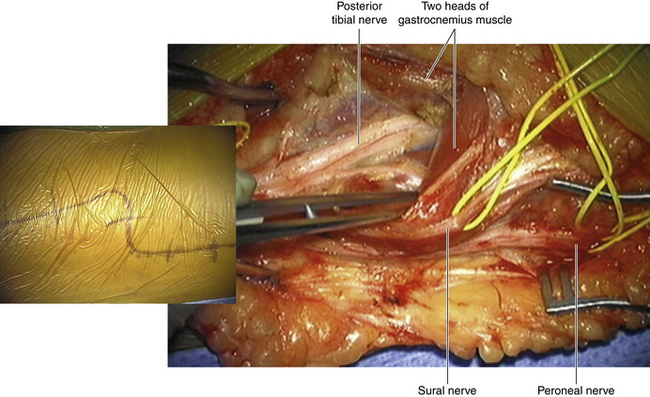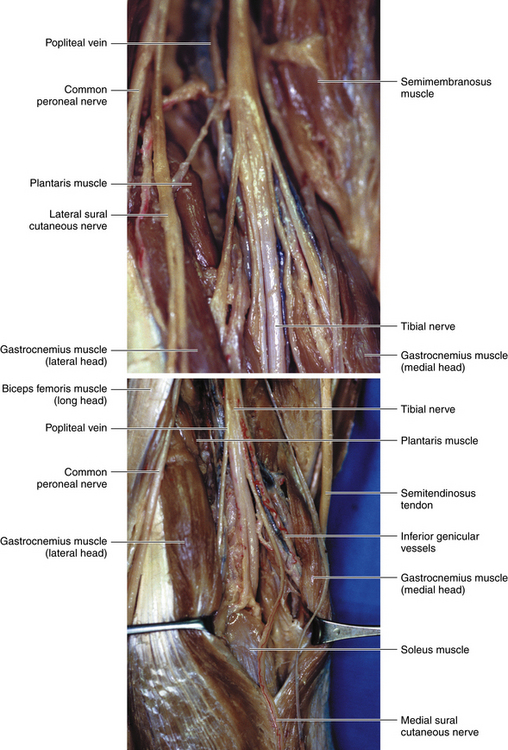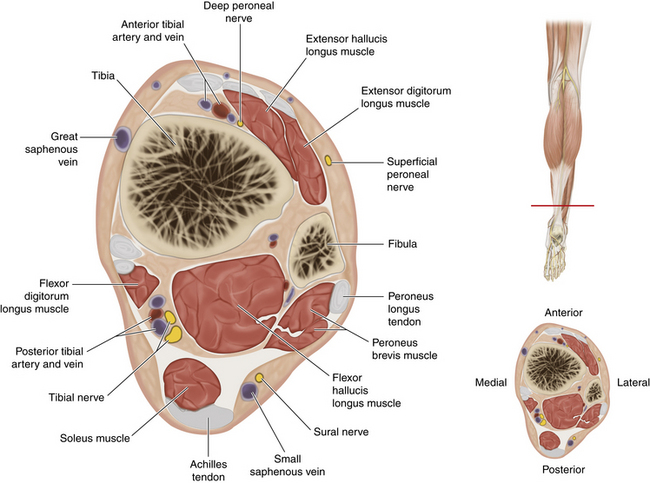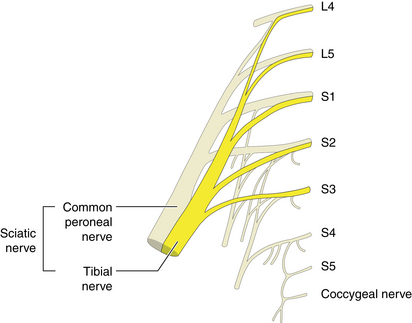Chapter 18 Tibial Nerve
Popliteal Fossa and Leg
Anatomy
• The gastrocnemius arises from two heads that attach to the distal femur (Figure 18-1). The muscle is superficial to the soleus, and the two muscles jointly form the Achilles tendon, which inserts into the calcaneus. The soleus arises from the fibula and tibia, forming a fibrous arch between them. Just as the median nerve runs a straight course deep to the arch of origin of the flexor digitorum superficialis, so does the posterior tibial nerve run deep to the soleus arch (Figure 18-2).
• The tendons of all three deep muscles of the calf run beneath the flexor retinaculum at the ankle. Characteristically, the flexor hallucis longus (FHL) maintains fleshy muscle fibers further distally than the other two (Figure 18-3). The posterior tibial nerve runs straight down the leg from the popliteal fossa to the flexor retinaculum, remaining medial to the border of the FHL throughout.
• The flexor retinaculum is a locally thickened band of fascia that runs between the medial malleolus and the calcaneus.
• The tibial nerve is a major branch of the sciatic nerve (Figure 18-4). When viewed from behind, the tibial nerve is overlapped proximally by the hamstring muscles. Becoming superficial in the popliteal fossa, it crosses the popliteal vessels and descends deep to the heads of gastrocnemius behind the knee joint, crossing the popliteus muscle to run beneath the fibrous arch in the soleus (see Figure 18-2).
• Muscular branches from the tibial nerve at the popliteal fossa arise between the heads of the gastrocnemius and supply the muscles of the popliteal fossa: (1) the plantaris, (2) the two heads of the gastrocnemius, (3) the soleus, and (4) the popliteus. The tibial nerve descends deep to the two heads of the gastrocnemius (see Figure 18-1).
• Distally, the posterior tibial nerve is covered only by skin and fascia.
• At the junction of the upper and middle thirds of the leg, branches to the tibialis posterior (responsible for foot inversion) and an additional branch to the soleus arise; slightly more distally, branches to the flexors of the big toe and the other toes originate.











